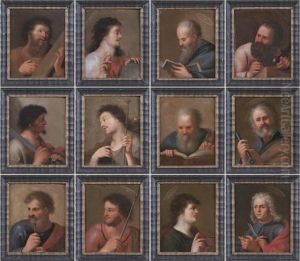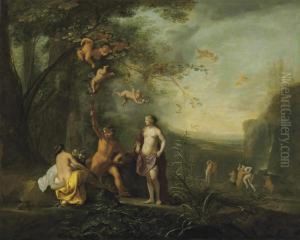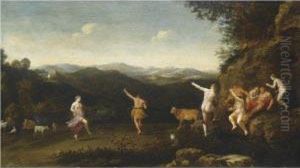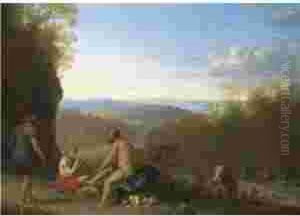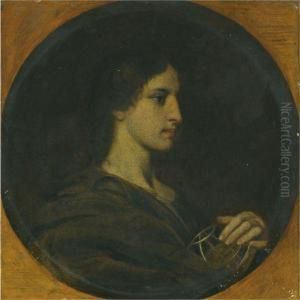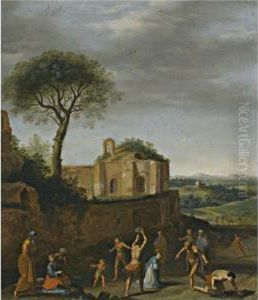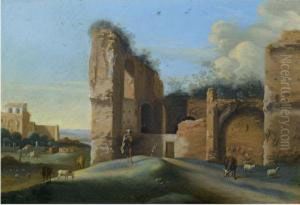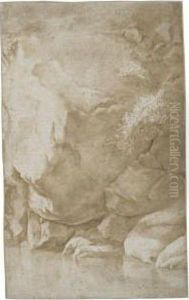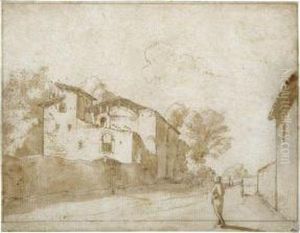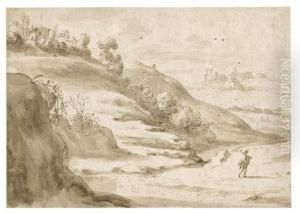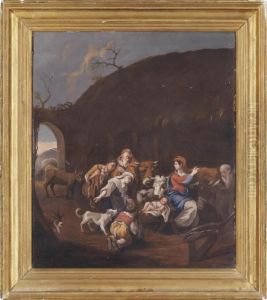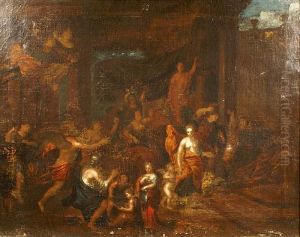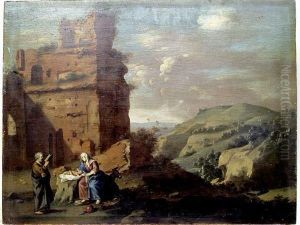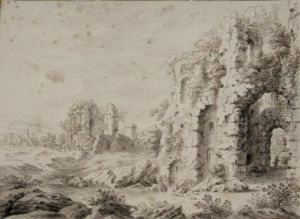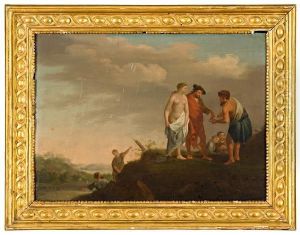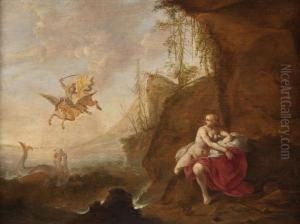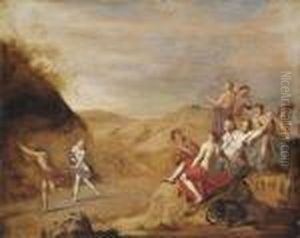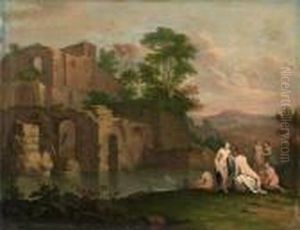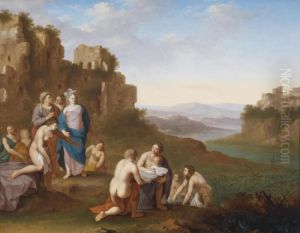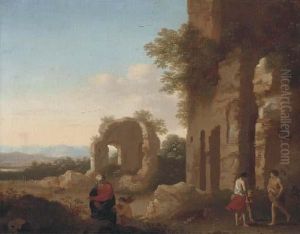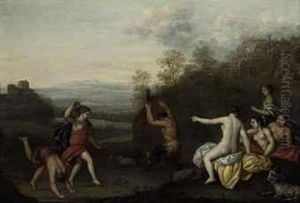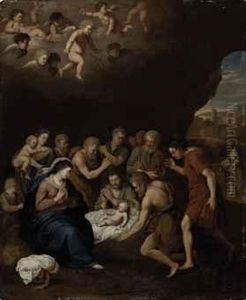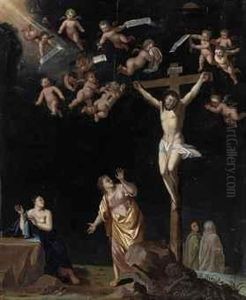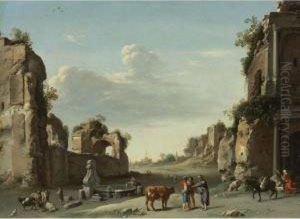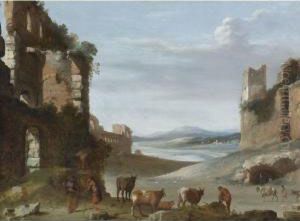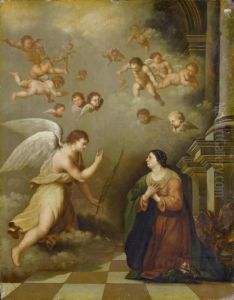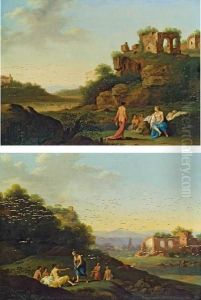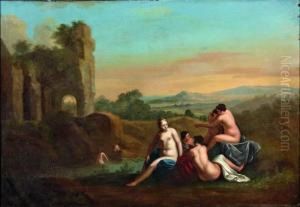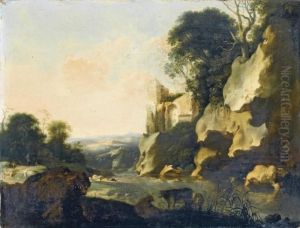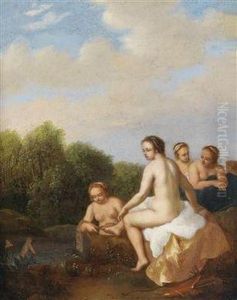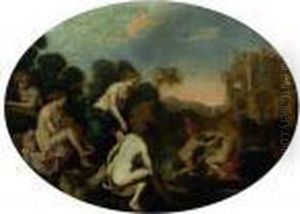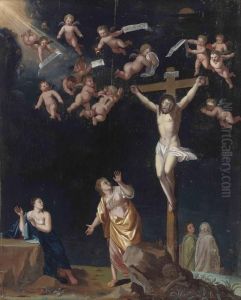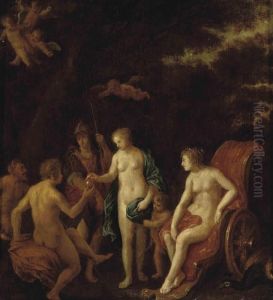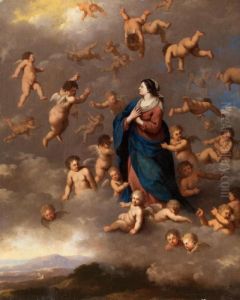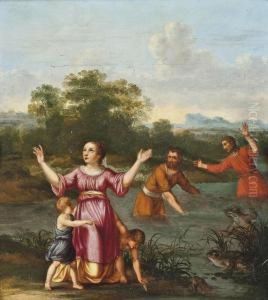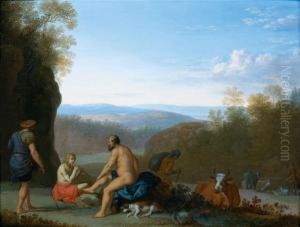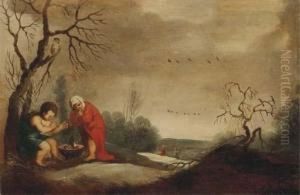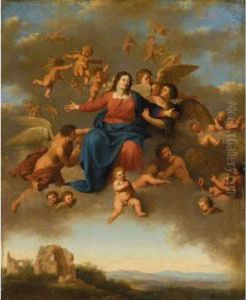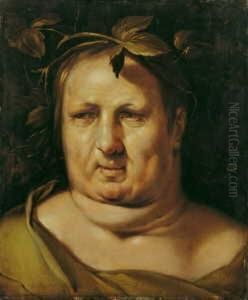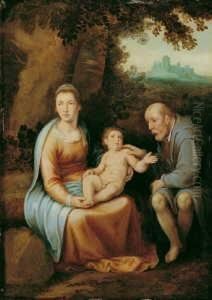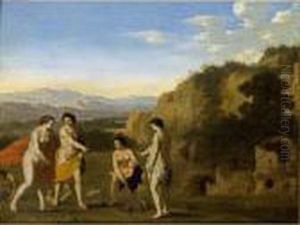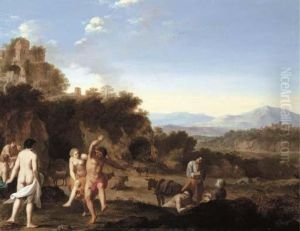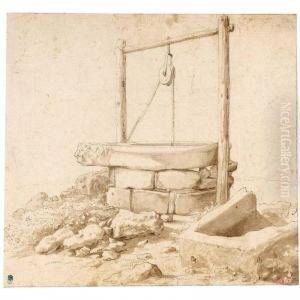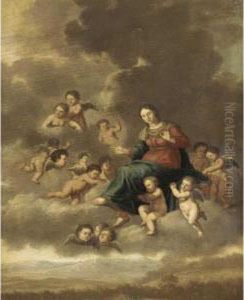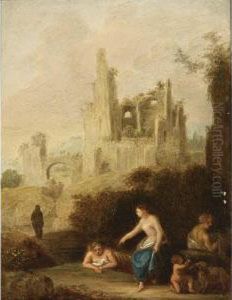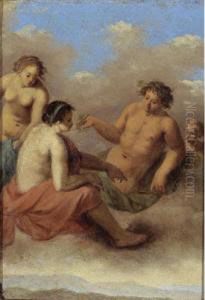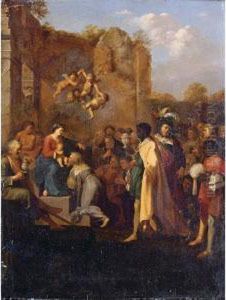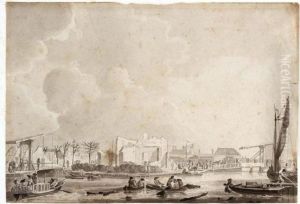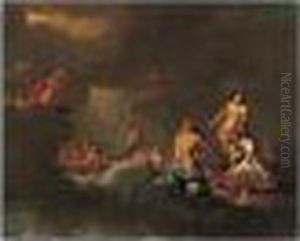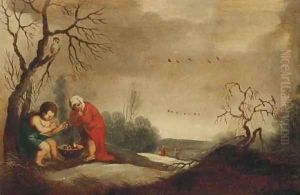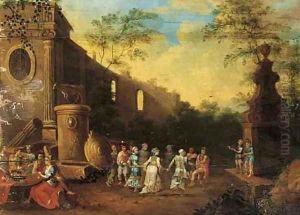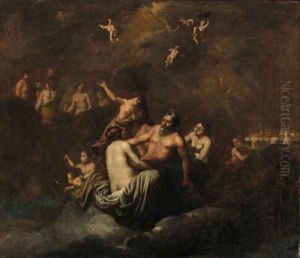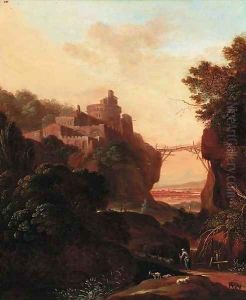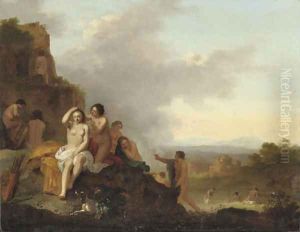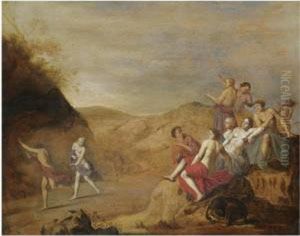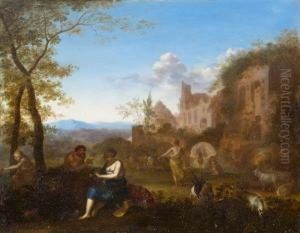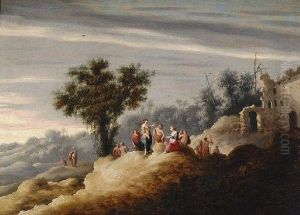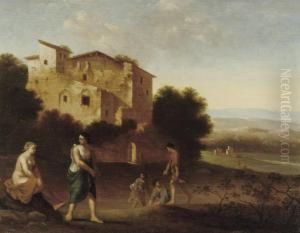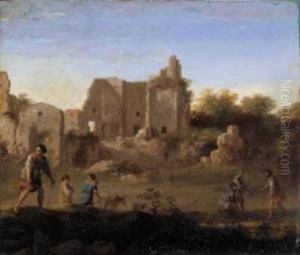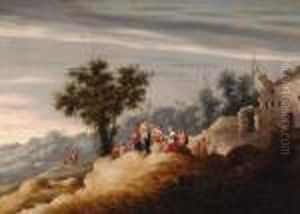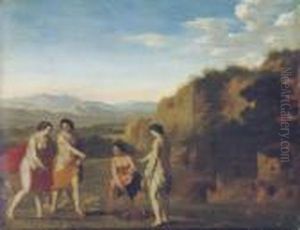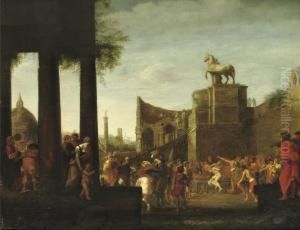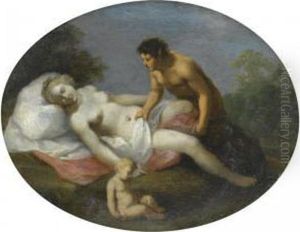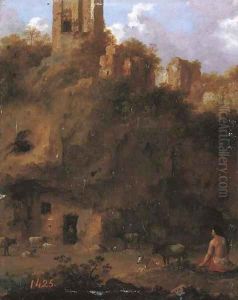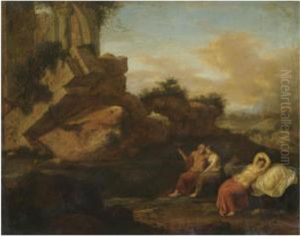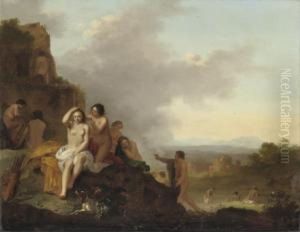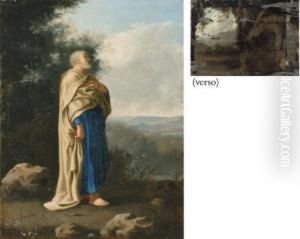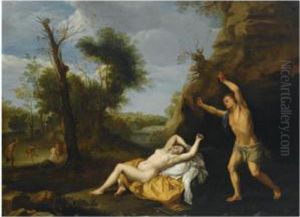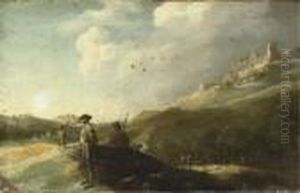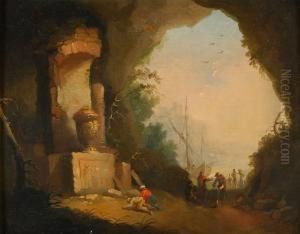Cornelis Van Poelenburch Paintings
Cornelis van Poelenburch, also spelled as Poelenburgh, was a Dutch Golden Age painter, recognized for his small-scale landscapes and figures which he often embellished with mythological or biblical themes. Born in Utrecht in the late 16th century, he was a pivotal figure in the development of the Dutch Italianate landscape painting. His birth date is often recorded as 1594 or 1595.
Van Poelenburch began his artistic training in Utrecht, where he was a pupil of Abraham Bloemaert. His style was greatly influenced by Bloemaert's emphasis on color and the detailed study of nature. However, it was his subsequent journey to Italy that profoundly shaped his aesthetic approach. He traveled to Rome around 1617, where he became part of the group of northern artists known as the 'Bentvueghels', a society that included many prominent painters of the time.
During his stay in Italy, he became particularly influenced by the works of classical artists and the contemporary Roman painter, Adam Elsheimer, who was known for his small scale, highly detailed landscapes that combined classical subjects with naturalistic scenery. Van Poelenburch adopted these qualities, integrating them with his own sense of light and delicate handling of figures.
After spending about ten years in Italy, Van Poelenburch returned to Utrecht around 1626 and brought with him the Italian influences that became characteristic of his work. His landscapes were often populated with elegant, classical figures and bathed in a warm, golden light. He became known for his ability to paint marble and other textures with great skill. His works appealed to collectors who desired the grandeur of Italian scenes composed with Dutch sensibility.
Van Poelenburch served as an influential member of the Utrecht Guild of Saint Luke and continued to paint and teach throughout his life. His pupils included several artists who would continue the Italianate tradition in Dutch painting. He became quite successful and was commissioned by many notable patrons, including the stadtholder Prince Maurice of Nassau.
Cornelis van Poelenburch's paintings were widely appreciated during his lifetime and had a considerable impact on the evolution of landscape painting in the Dutch Golden Age. His idyllic and refined landscapes served as a bridge between the classical world and the burgeoning realism that characterized Dutch art of the period. He passed away in Utrecht in 1667, leaving behind a legacy that would influence generations of landscape artists to come.
